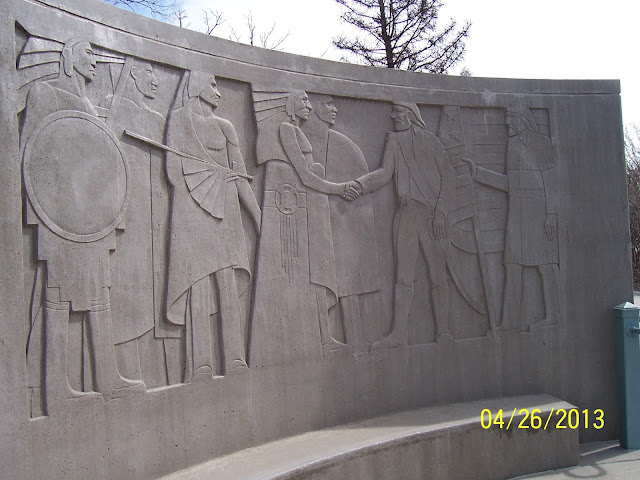 |
| A picture from Lewis and Clark Park overlooking the Missouri River. In the background is Omaha, Nebraska |
 |
| You can see how far above the treetops the overlook is. This is Big Lake at the base of Lewis and Clark Park. |
 |
This is at the Lewis and Clark monument. They met with the Indians and forged agreements just below the bluffs.1804-1843
The city was named for an 1804 meeting of the Lewis and Clark Expedition with the Otoe tribe, which took place near present-day Fort Calhoun, Nebraska. The Council Bluffs became the generic name for the land on both sides of the Missouri River north of the mouth of the Platte River; the northwestern corner of Mills County, Iowa was then specifically called Council Bluffs.
The present city of Council Bluffs was first settled by Sauganash and his Potawatomi band in 1838. He won the respect of Americans in the War of 1812, but was later persuaded to remove from what became Chicago. Sauganash, the mixed-race son of Irish immigrant William Caldwell and a Mohawkmother, was also called Billy Caldwell. The Potawatomi main settlement, which numbered about 2,000 people, became called Caldwell's Camp. The U.S.Dragoons built a small fort nearby.
In 1838-39, the missionary Pierre-Jean De Smet founded St. Joseph's Mission to minister to the Potawatomi. De Smet was appalled by the violence and brutality caused by the whiskey trade, and tried to protect the tribe from unscrupulous traders. He had little success in persuading tribal members to convert to Christianity, and resorted to secret baptisms of Indian children
|
